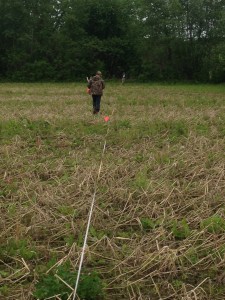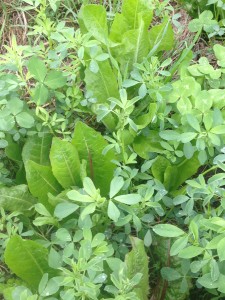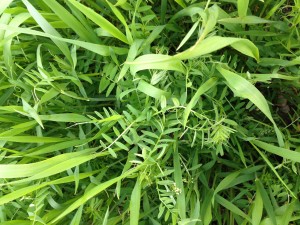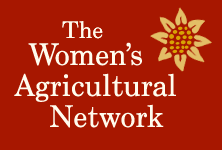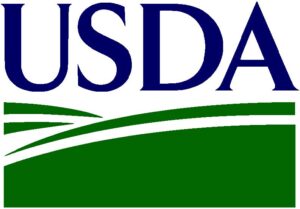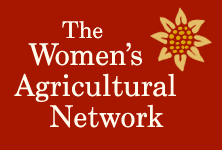Response to “Pastoral Icon or
Woolly Menace?” (NYT January 26, 2014)
By Kimberly Hagen Grazing Specialist, Extension, University of Vermont
It’s not the sheep Mr. Monbiot, it’s the people that manage them, THAT is the problem. Ah! What a surprise – to think that people, and our infatuation with bowling green expanses could be responsible. This four legged creature whose historical existence is tightly woven with the human race, providing it with a portable source of food, fiber and material for the pages of writing that history, knows only to do what evolution and humans have directed it to do – eat, roam and procreate with the occasional baa-aaing. For more than just a few centuries, humans relied on this species to provide what it needed to survive. But cultivation agriculture evolved, and the dependence on sheep faded as other foods became an integral part of the human diet. Still, we insist on having them numerously populating our landscape, and Mr. Monbiot is right in stating that the places where they have been looks “like the aftermath of a nuclear winter.” It is indeed an ecological disaster as he declares – to the living systems and on par with industrial pollution and climate change – if you are in that camp. The mid-east provides all the evidence needed to see what ruminants will do to a landscape when not managed with care to balance with the existing ecosystem.
So here we are in the 21st century, no longer so completely dependent on that species for survival, yet unwilling to give up the landscape they provide us. The question we should be asking is why? What is it about that landscape that we can’t let go of? England is not alone in this green carpet infatuation. I have no idea what the total tally of time, labor, fuel and chemical cost of maintaining the lawns here in the USA might be, but it would probably send everyone but the lawnmower and chemical companies swooning if we really knew. But why are we so attracted to that vision that we ignore all practical and economic reason (and there are many! ) against it. This is a very important question because it does need an answer and we can’t keep blaming the sheep. That deeply cherished landscape is very, very, very expensive – for everyone.
No doubt anthropological, neurological, or psychological scientists have theories and good explanations about the human attachment to expansive clipped lawns. I leave it to them and look forward to hearing what they are. In the meantime, the timing might be just right for some adjustments – oh boy, here comes another paradigm shift! In other words, since we are nearing a crisis point with our bowling green infatuation, both financially and environmentally, perhaps we should take this opportunity to try and embrace a different landscape – the “scruffy scrub”? We just might get some cake ( a smaller piece) and get to eat it as well.
In the “scruffy scrub” landscape, the sheep get to stay, but not as many, and not 24/7. They are confined to a smaller section for a period of time and then moved to a new section. Clipping or mowing is not allowed. It does leave a scruffy, rough unkempt look, although with some evidence of management, as there has been some grazing. The rewards? Birds and insects will populate the habitat, and other bits of wildlife as well – a “rewilding” of sorts, as Mr Monbiot so fervently wishes. The sheep will be happier as they won’t have to work so hard for a mouthful of food, and they will be healthier since the need for chemical worming medication is dramatically reduced when grazing is taking place in the upper levels of forage, and not near the ground where the parasite larvae like to hang out.
Sheep are still important – they are a renewable resource, and still provide meat, and wonderful fiber that is finally enjoying the renaissance it deserves. Hard to believe, but there isn’t yet a man-made fiber that can do what wool can do.
So perhaps a gathering of Mr. Monbiot, with Phil Bicknell – the economist for the National Farmer’s Union, John Boardman – the Oxford Geographer, Wouter Helmer – of Rewilding Europe, and Paul Lister – of Ecotourism Scotland, to prepare a meal of roasted leg of lamb and potatoes, drenched in rosemary, red wine and garlic, where all would get to eat it too – would be a place to start. The landscape needs a new coverlet, and it’s best if knitted together with all the strands. It will be much stronger and last much longer.
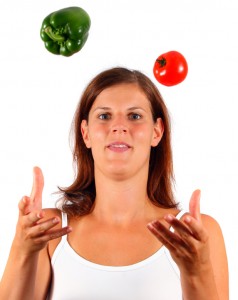 It’s official. We have arrived at that time of year when you think you can’t possibly do one more thing. You’re exhausted. Your back hurts (not just in the morning now but all the time), the weeds are out of control, something is trying to eat the chickens, and the beef cows seem able to find the smallest weakness in the fence. All those great ideas for keeping the kids entertained during summer break have turned into “has anyone seen the kids this week?” …but then the tractor breaks, or your apprentice runs off with your field manager, or your very pregnant sister-in-law trips over the dog, breaks her wrist and now needs “a little help” around the house.
It’s official. We have arrived at that time of year when you think you can’t possibly do one more thing. You’re exhausted. Your back hurts (not just in the morning now but all the time), the weeds are out of control, something is trying to eat the chickens, and the beef cows seem able to find the smallest weakness in the fence. All those great ideas for keeping the kids entertained during summer break have turned into “has anyone seen the kids this week?” …but then the tractor breaks, or your apprentice runs off with your field manager, or your very pregnant sister-in-law trips over the dog, breaks her wrist and now needs “a little help” around the house.

